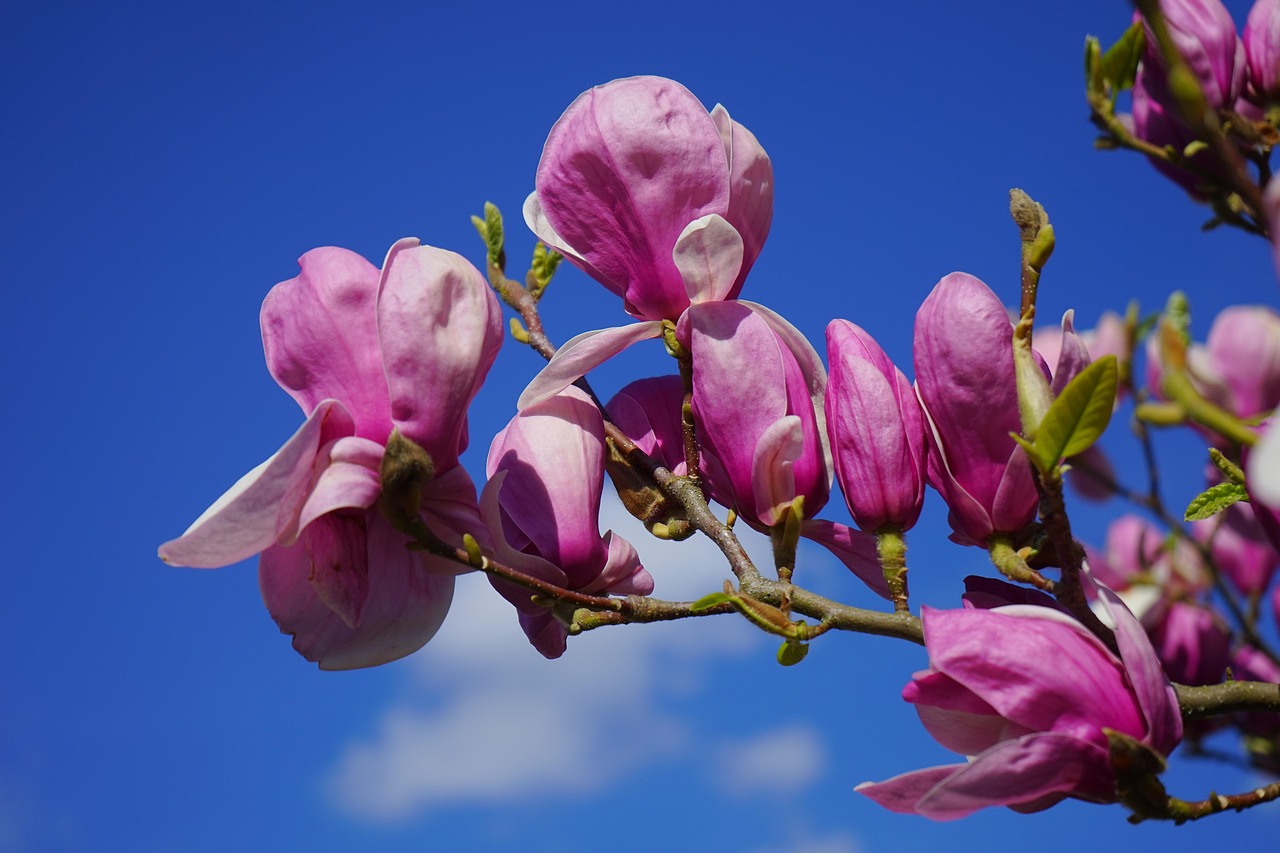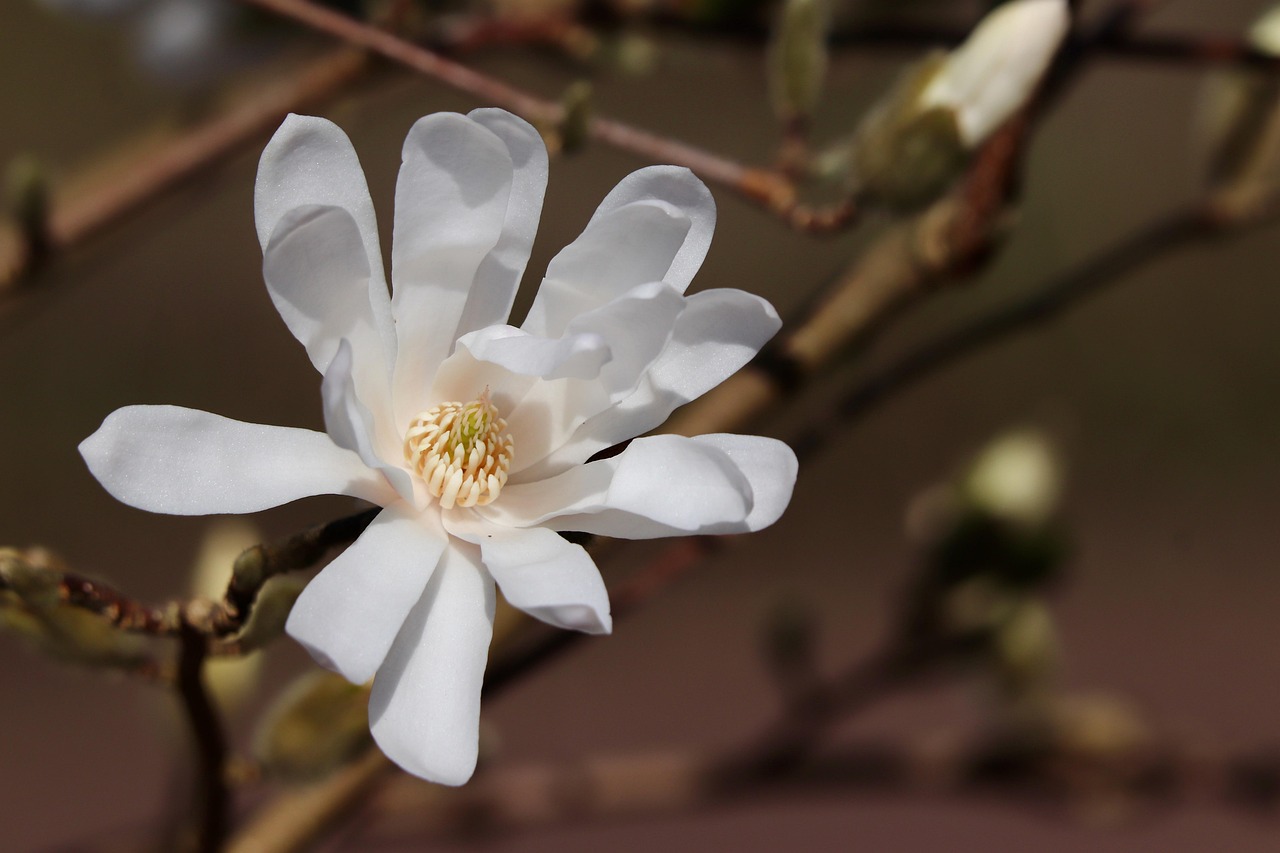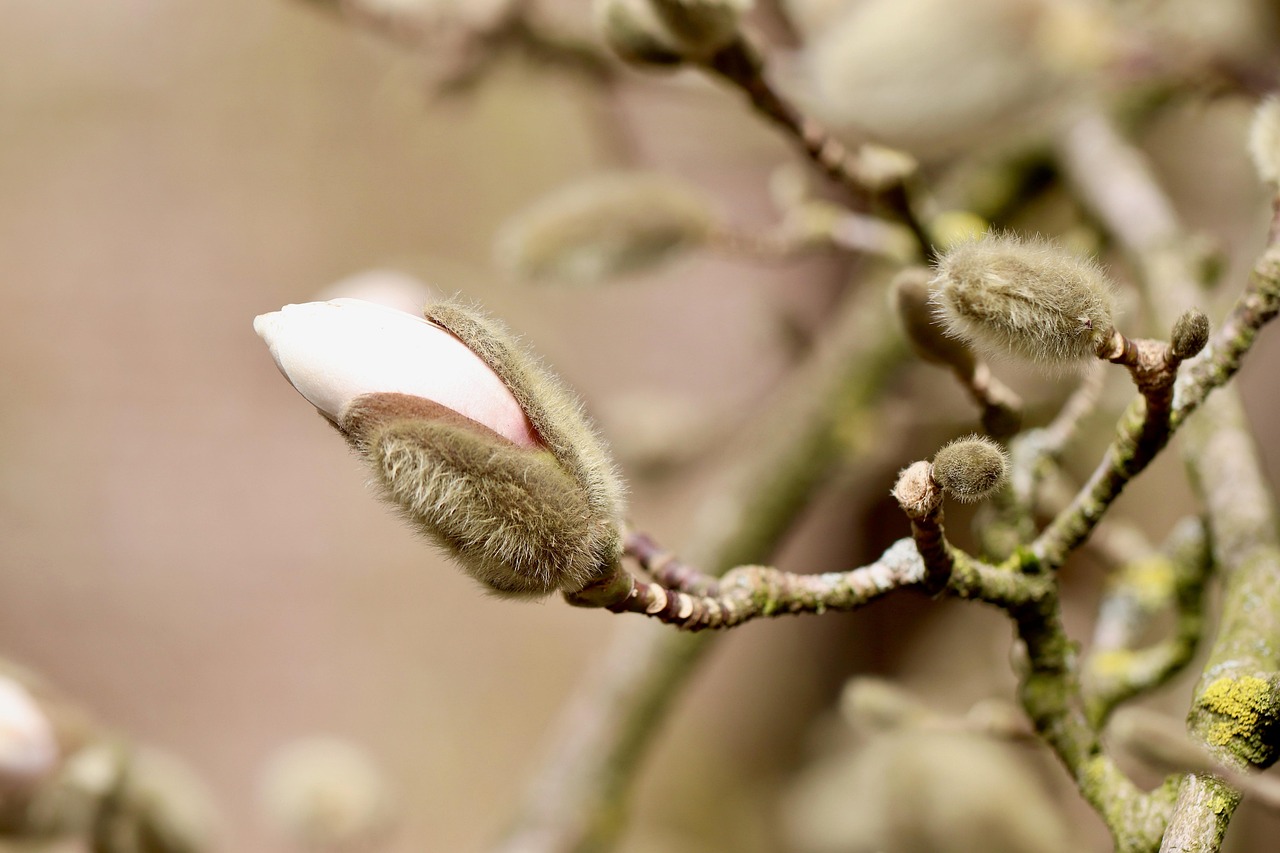Magnolia tree roots can potentially cause damage, especially if planted too close to structures. Their root systems are expansive and may disrupt sidewalks, driveways, or building foundations. Proper precautions, such as planting at a safe distance, can help mitigate these risks.
Magnolia trees are cherished for their stunning flowers and fragrant blooms. They are popular choices for landscaping in many gardens and parks. However, many homeowners wonder about the impact of these trees on their property, particularly regarding the roots. Understanding the growth patterns of magnolia roots is essential for anyone considering planting these beautiful trees.
Magnolia trees belong to the Magnoliaceae family and are known for their large, glossy leaves and spectacular flowers. They can grow quite tall, with some species reaching heights of 80 feet or more. The roots of magnolia trees vary in depth and spread, depending on the specific species and environmental conditions. Generally, they have a shallow but wide root system, which can extend several feet from the trunk.
Understanding Magnolia Tree Roots

The root system of a magnolia tree plays a crucial role in its overall health and stability. Here are some key characteristics of magnolia roots:
- Shallow Growth: Magnolia roots tend to grow close to the surface. This characteristic makes them more likely to interfere with nearby structures.
- Wide Spread: The roots can spread out significantly beyond the tree’s canopy. This expansive growth can lead to potential damage if not managed properly.
- Aggressive Nature: Some species of magnolia have been known to develop aggressive root systems that can disrupt pavements or compete with other plants for nutrients.
When considering planting a magnolia tree, it is important to take these factors into account. Depending on the species, magnolia roots can cause various types of damage. This includes lifting concrete surfaces or invading sewer lines. Therefore, understanding the specific needs and growth patterns of the chosen magnolia variety is essential before planting.
Potential Risks of Magnolia Roots
Homeowners should be aware of several potential risks associated with magnolia tree roots:
- Damage to Foundations: If planted too close to homes or other structures, magnolia roots can exert pressure on foundation walls, leading to cracks or structural instability.
- Sidewalk and Driveway Damage: The shallow nature of the roots can lift pavement surfaces, creating tripping hazards or damaging vehicles parked nearby.
- Interference with Underground Utilities: Roots may infiltrate sewer lines or water pipes, causing blockages or leaks which can be costly to repair.
To minimize these risks, it is advisable to plant magnolias a safe distance from any structures or utilities. Generally, a distance of at least 10 to 15 feet is recommended to allow for adequate growth without causing damage.
Precautions When Planting Magnolia Trees
Taking proper precautions during the planting process can help prevent future issues with magnolia roots. Here are some strategies to consider:
- Selecting the Right Location: Choose a location that allows enough space for root expansion while keeping a safe distance from foundations and paved areas.
- Choosing Appropriate Species: Some magnolia species have less aggressive root systems than others. Researching and selecting the right variety for your landscape can help mitigate risk.
- Regular Monitoring: After planting, monitor the tree’s growth and root development closely. Early detection of any potential issues can save you from costly repairs later.
- Using Root Barriers: Installing physical barriers can help direct root growth away from sensitive areas such as sidewalks and foundations.
By following these precautions, homeowners can enjoy the beauty of magnolia trees while minimizing potential risks associated with their roots. Understanding how to manage their growth will lead to a healthier landscape and fewer complications down the line.
The unique beauty of magnolias makes them a desirable addition to many gardens. However, their robust root systems require careful planning and consideration. With proper precautions in place, it is possible to enjoy the aesthetic appeal of these magnificent trees without compromising the integrity of nearby structures.
Species of Magnolia Trees and Their Root Behavior
Different species of magnolia trees exhibit varying root behaviors and growth patterns. Understanding these differences is essential for selecting the right type of magnolia for your landscape. Here, we will explore some common species of magnolia trees and their respective root characteristics.
Popular Magnolia Species
- Southern Magnolia (Magnolia grandiflora): This iconic species is known for its large, fragrant flowers and glossy leaves. Its roots tend to be shallow but can spread extensively, making it important to plant it away from structures.
- Star Magnolia (Magnolia stellata): A smaller tree that produces stunning star-shaped flowers, this species has a less aggressive root system, making it suitable for smaller gardens.
- Saucer Magnolia (Magnolia x soulangeana): This hybrid is popular for its large, showy blooms. While its roots are still wide-spreading, they are generally not as invasive as those of the Southern Magnolia.
- Cucumber Tree (Magnolia acuminata): Known for its tall stature and unique fruit, this species has a more manageable root system, often making it a better choice when space is limited.
When selecting a magnolia species, consider the available space in your yard and the proximity to existing structures. A thorough understanding of each species can assist in making an informed choice that minimizes potential risks associated with their roots.
Signs of Root Damage
Identifying signs of root damage early can help homeowners address issues before they escalate. Here are some common signs to look out for:
- Cracked Foundations: If you notice cracks in your home’s foundation, it may be due to the pressure exerted by nearby magnolia roots.
- Uplifted Pavement: Sidewalks and driveways may become raised or uneven due to the growth of magnolia roots underneath.
- Wilting or Dying Plants: If neighboring plants show signs of stress or dying back, it may indicate that the magnolia’s roots are competing for nutrients and water.
- Visible Root Growth: Exposed roots above ground level can indicate that the tree is not getting enough moisture or nutrients and could be a sign of underlying issues.
Regular inspections of both your magnolia tree and the surrounding area can help you identify these signs early. If you notice any of these issues, it may be necessary to consult with an arborist or landscaping professional.
Mitigating Risks Through Proper Maintenance
Proper maintenance is crucial to preventing damage from magnolia roots. Here are some practical maintenance tips:
- Regular Pruning: Pruning your magnolia tree helps maintain its shape and encourages healthy growth. It can also help reduce the size of the root system over time.
- Soil Aeration: Aerating the soil around the tree can help improve drainage and reduce compaction. This encourages healthier root development while minimizing damage to nearby structures.
- Water Management: Ensure your magnolia tree receives adequate water without becoming waterlogged. Overwatering can promote root rot and lead to unhealthy growth patterns.
- Pest Control: Keep an eye out for pests that may affect the health of your magnolia tree. Healthy trees are less likely to develop aggressive root systems that can cause damage.
Implementing these maintenance practices can contribute to the longevity and health of your magnolia tree while minimizing risks associated with their roots.
The Role of Soil Type in Root Development
The type of soil in which a magnolia tree is planted significantly influences its root growth and behavior. Different soil types have varying effects on how roots expand and develop:
| Soil Type | Impact on Roots |
|---|---|
| Clay Soil | Holds moisture but can lead to poor drainage. Roots may struggle to grow deep. |
| Sandy Soil | Drains well but may not retain enough moisture for healthy root development. |
| Loamy Soil | Ideal for magnolias, providing good drainage and moisture retention for optimal growth. |
Selecting the appropriate soil type or amending your existing soil can greatly enhance the health of your magnolia tree’s root system. This consideration is crucial when planning where to plant.
A

comprehensive understanding of magnolia trees, their root systems, and proper maintenance techniques can empower homeowners to enjoy these beautiful trees without the fear of damage. By taking proactive steps and remaining vigilant about their growth, it is possible to create a harmonious landscape that incorporates magnolias safely.
Best Practices for Planting Magnolia Trees
S

uccessfully planting magnolia trees requires careful planning and execution. By following best practices, you can ensure that your magnolia develops a healthy root system while minimizing potential damage to your property. Here are some essential tips to consider when planting magnolias.
Choosing the Right Location
The location of your magnolia tree is critical for its growth and the health of your landscape. Consider the following factors when selecting a site:
- Sunlight: Magnolias thrive in full sun to partial shade. Ensure the chosen location receives at least six hours of sunlight each day.
- Space: Provide adequate space for the tree to grow. Consider both the height and spread of the tree when selecting a location.
- Drainage: Avoid low-lying areas where water might pool. Proper drainage is essential for preventing root rot.
- Proximity to Structures: Plant magnolias at least 10 to 15 feet away from buildings, sidewalks, and other structures to minimize root damage.
Preparing the Planting Hole
Proper preparation of the planting hole is vital for ensuring the health of your magnolia tree. Follow these steps for effective hole preparation:
- Digging the Hole: The hole should be twice as wide as the root ball but no deeper than the root ball itself. This allows roots to spread out easily while avoiding suffocation.
- Soil Amendments: If your soil is poor or compacted, consider adding organic matter such as compost or peat moss to improve its quality.
- Aeration: Gently loosen the sides of the hole with a spade or gardening fork to prevent roots from becoming girdled.
Planting and Watering Techniques
After preparing the planting hole, it is time to plant your magnolia tree. Proper planting and watering techniques can enhance root development significantly.
Planting the Tree
When planting, follow these guidelines:
- Positioning: Place the magnolia tree in the center of the hole, ensuring that the top of the root ball is level with the surrounding soil.
- Backfilling: Gradually backfill with native soil, gently tamping it down to eliminate air pockets. Avoid packing the soil too tightly, as this can hinder root growth.
- Mulching: Apply a layer of mulch around the base of the tree, keeping it a few inches away from the trunk. Mulch helps retain moisture and suppress weeds.
Watering After Planting
Watering is crucial after planting to help the tree establish its roots. Here are some watering tips:
- Initial Watering: Water the tree thoroughly immediately after planting, ensuring that moisture reaches deep into the root zone.
- Regular Watering Schedule: During the first growing season, water your magnolia regularly—about once a week, depending on rainfall. Adjust as needed based on soil moisture levels.
- Avoid Overwatering: Be cautious not to overwater, as this can lead to root rot. Monitor soil moisture and only water if it feels dry an inch below the surface.
Long-Term Care and Maintenance
Once your magnolia tree is planted, ongoing care is essential for its growth and stability. Here are some long-term maintenance practices to consider:
Fertilization
A well-fed magnolia tree is more likely to develop a robust root system. Here’s how to fertilize effectively:
- Timing: Fertilize in early spring before new growth begins. This timing ensures that nutrients are available when the tree needs them most.
- Selecting Fertilizer: Use a slow-release fertilizer formulated for trees or shrubs. Follow package instructions for application rates.
- Avoid Over-Fertilizing: Too much fertilizer can harm your magnolia tree and its roots. Stick to recommended amounts to prevent nutrient burn.
Pest and Disease Management
Monitoring for pests and diseases is essential for maintaining the health of your magnolia tree. Here are some common issues to watch for:
- Aphids: These small insects can infest new growth and may require insecticidal soap treatment if populations become large.
- Mildew: Powdery mildew can occur in humid conditions. Regularly inspect leaves and treat with fungicides if necessary.
- Cankers: These can develop on branches or trunks, leading to dieback. Prune affected areas promptly and sanitize tools.
By implementing proper planting techniques, ongoing care, and pest management strategies, homeowners can successfully cultivate magnolia trees while minimizing potential damage from their roots. Understanding these practices allows for a flourishing landscape that showcases the beauty of magnolias without compromising structural integrity.
Addressing Common Concerns About Magnolia Roots
Homeo

wners may have various concerns regarding the roots of magnolia trees, particularly related to their growth patterns and potential damage. Understanding these concerns can help in making informed decisions about planting and caring for these trees. Below are some common inquiries and clarifications regarding magnolia roots.
How Deep Do Magnolia Roots Grow?
The depth of magnolia roots can vary based on the species and environmental conditions. Generally, magnolia roots are shallow, usually extending no deeper than 18 inches below the surface. However, their lateral spread can be significant, often reaching several feet from the trunk. This characteristic is essential to consider when planting near structures, as shallow roots can still cause damage to foundations and paved surfaces.
Are Magnolia Roots Invasive?
While magnolia roots are not typically classified as invasive like some other species, they can still pose risks if not managed properly. Their wide-spreading nature can disrupt nearby plants and infrastructure. Therefore, selecting a suitable planting location and performing regular maintenance is crucial to mitigate any potential issues.
Can Magnolia Roots Be Pruned?
Pruning magnolia roots is generally not recommended because it can stress the tree and lead to further problems. However, if roots are visibly damaging structures or causing other issues, consulting with an arborist is advisable. Professionals can assess the situation and provide guidance on the best course of action without compromising the health of the tree.
Potential Environmental Benefits of Magnolia Trees
Despite concerns about root damage, magnolia trees offer numerous environmental benefits that make them valuable additions to landscapes:
- Air Quality Improvement: Magnolias help purify the air by absorbing carbon dioxide and releasing oxygen, contributing to a healthier environment.
- Habitat for Wildlife: These trees provide shelter and food for various wildlife species, including birds and insects. Their flowers attract pollinators such as bees.
- Soil Erosion Prevention: The extensive root system of magnolias helps stabilize soil, preventing erosion and promoting healthy soil structure.
- Aesthetic Value: The stunning flowers and glossy foliage enhance the beauty of landscapes, increasing property values and community appeal.
By considering these environmental benefits, homeowners can appreciate the positive impact magnolia trees have on their surroundings while managing their growth effectively.
Community and Landscaping Considerations
When planting magnolia trees, it’s also important to think about community landscaping practices. Here are some considerations that can help:
- Community Guidelines: Check local regulations or guidelines regarding tree planting in your area. Some communities may have specific recommendations or restrictions regarding tree types.
- Neighborhood Compatibility: Consider how a magnolia tree fits into the overall landscaping of your neighborhood. Matching tree species and styles can enhance community aesthetics.
- Professional Consultation: Engaging with landscape professionals can provide insights into the best practices for planting and maintaining trees in your area.
Aligning your landscaping choices with community standards not only contributes to property value but fosters community spirit through shared beautification efforts.
Conclusion
Magnolia trees are magnificent additions to any landscape, offering both beauty and ecological benefits. While their root systems can pose challenges, understanding these risks allows homeowners to take proactive measures to prevent damage. By carefully selecting the right species, choosing appropriate planting locations, and implementing proper maintenance practices, it is possible to enjoy the splendor of magnolias without compromising structural integrity or landscape harmony.
Ultimately, with informed planning and ongoing care, magnolia trees can flourish in your yard, providing shade, beauty, and a connection to nature. Embracing these trees not only enhances your personal space but also contributes positively to the broader environment. With the right precautions and knowledge in place, magnolias can be a source of enjoyment for years to come.
